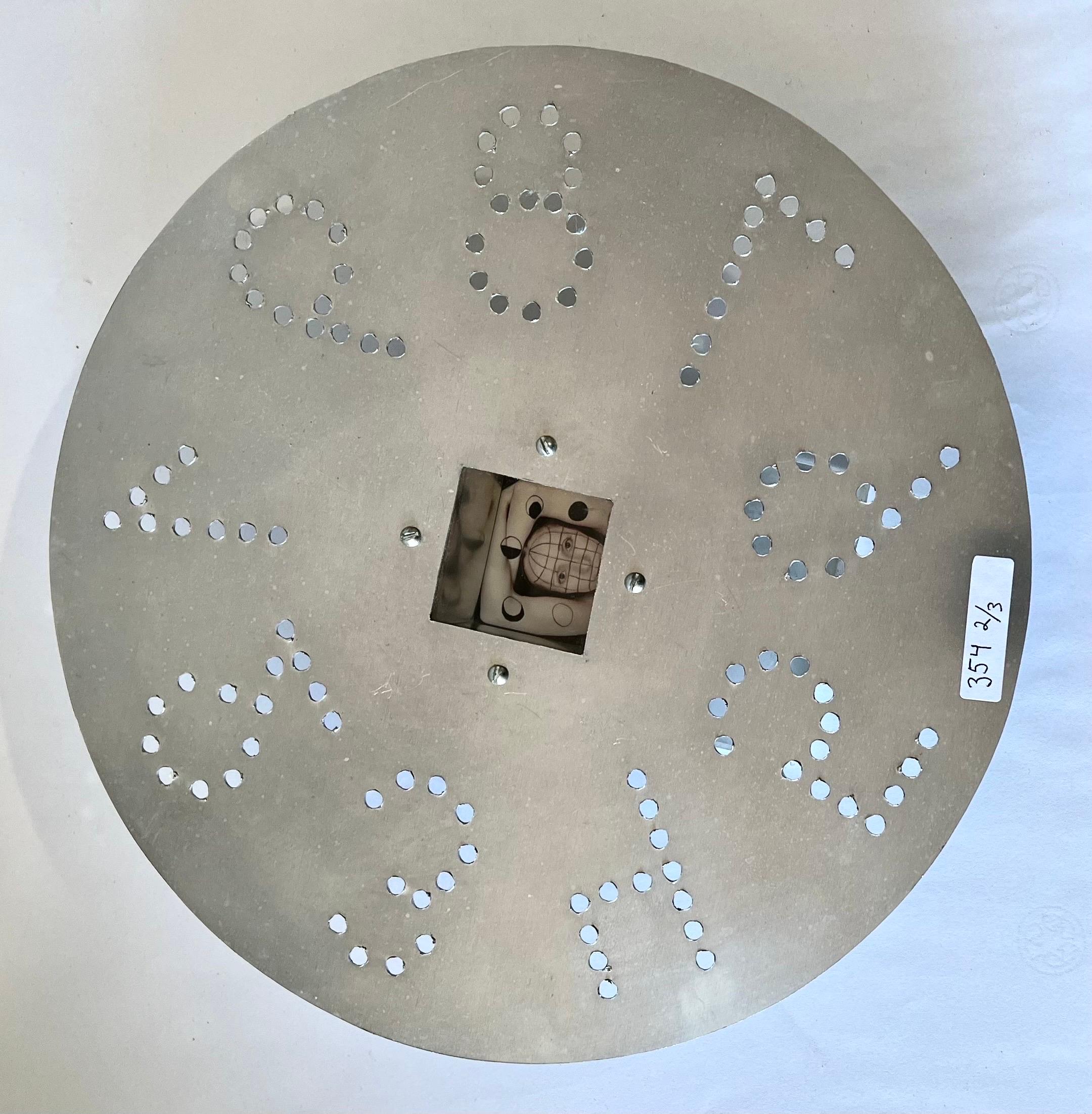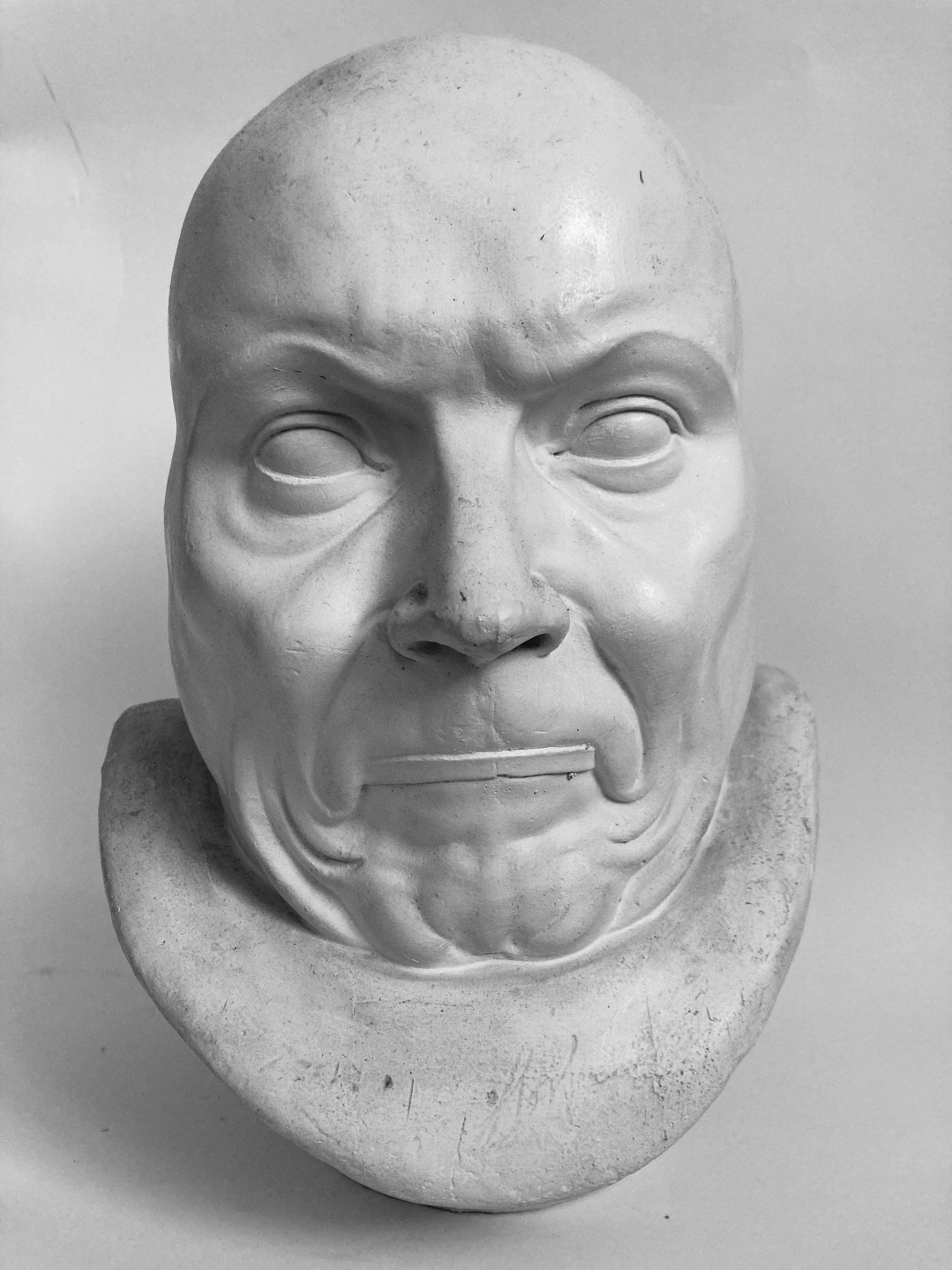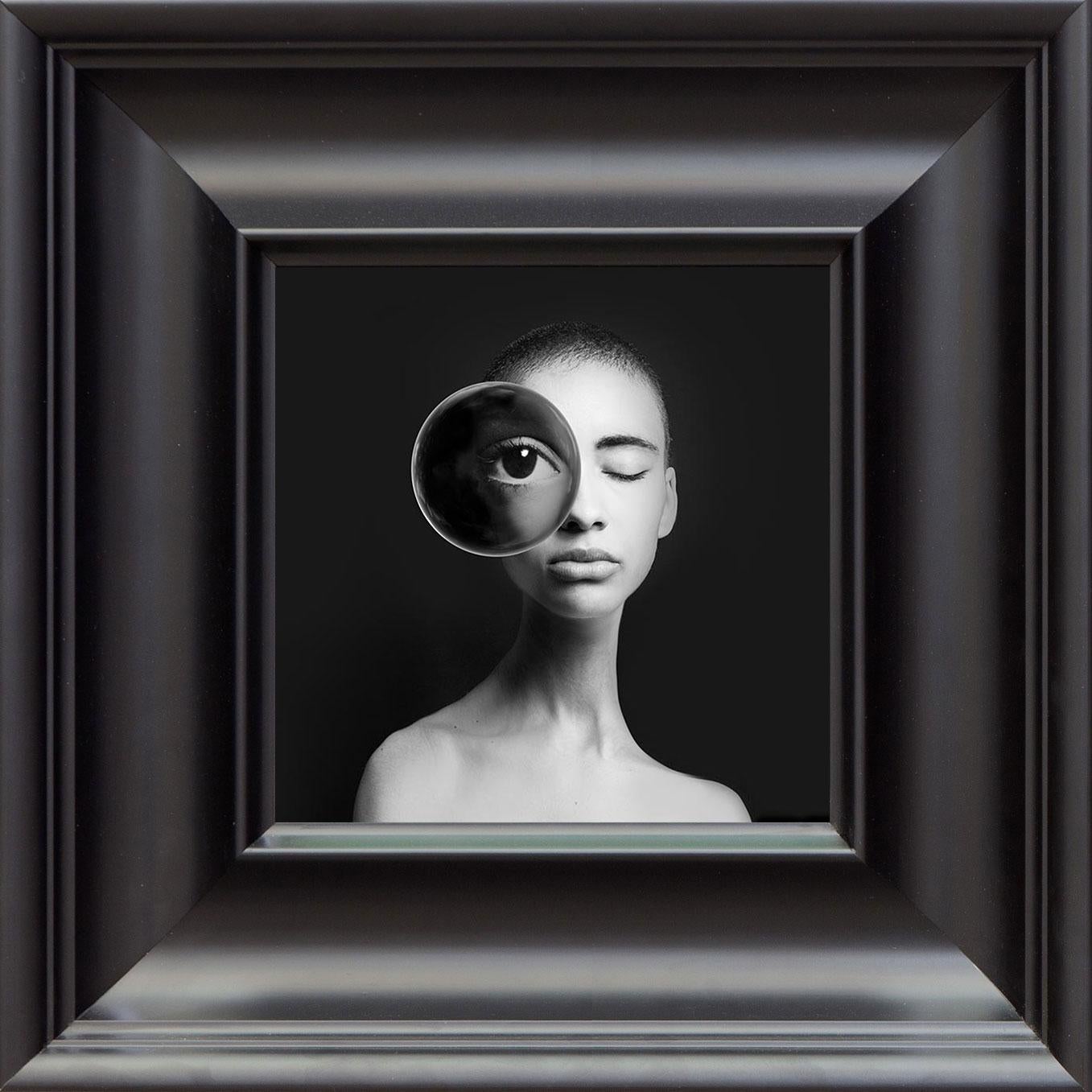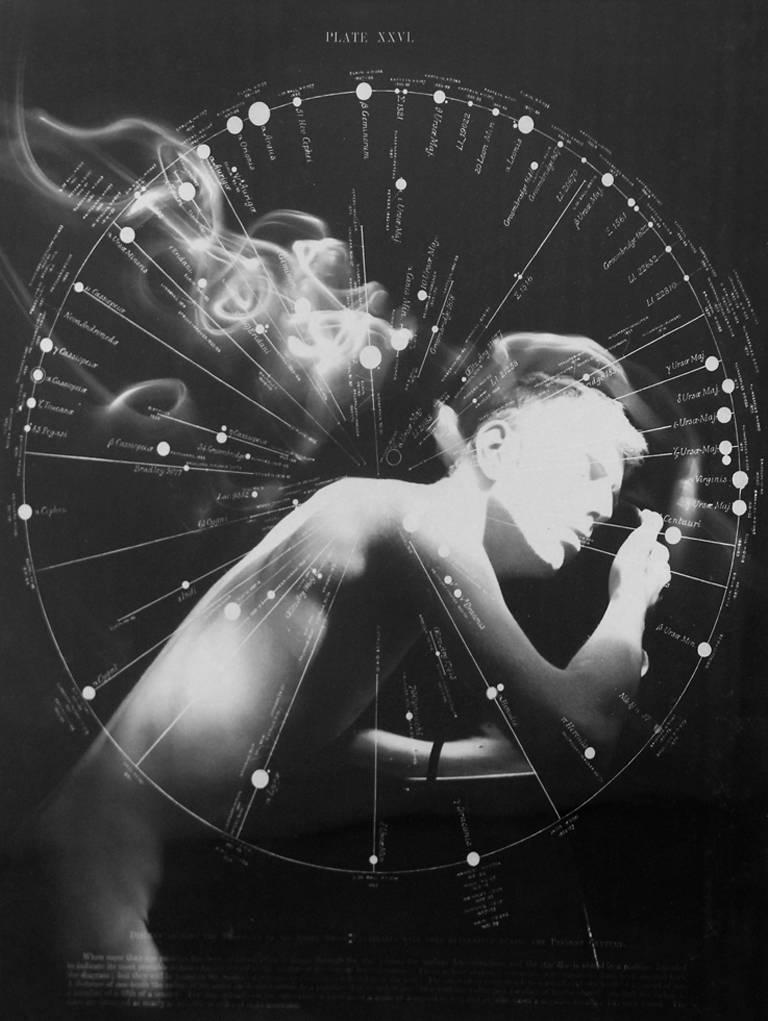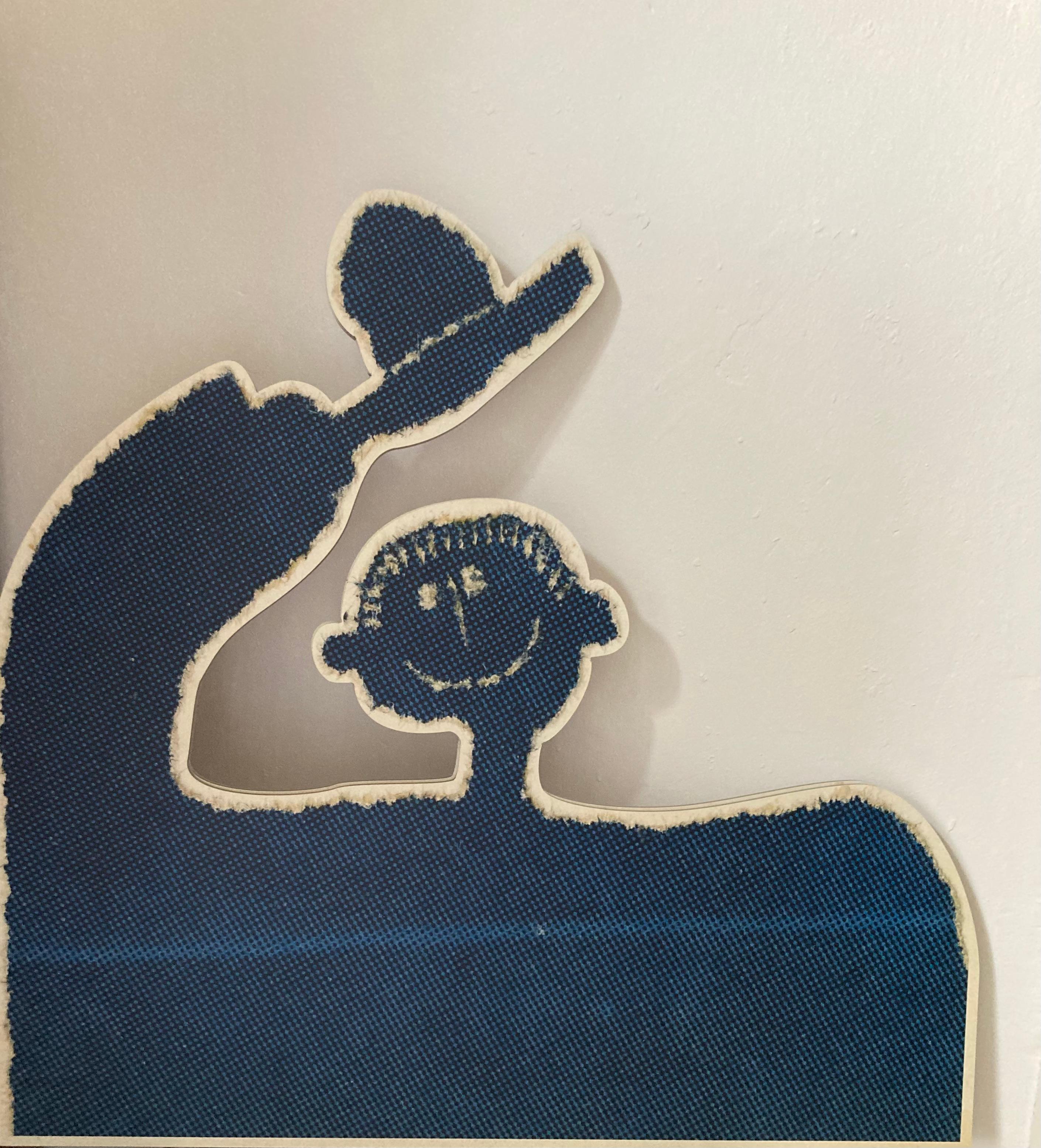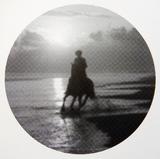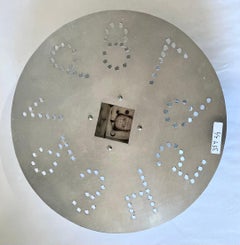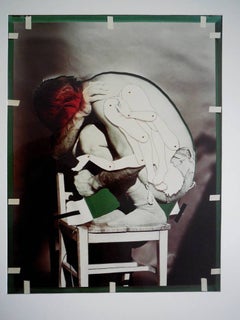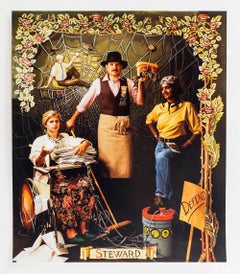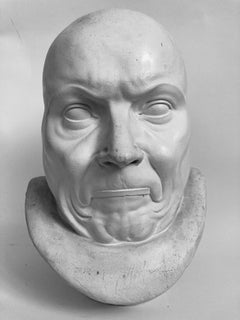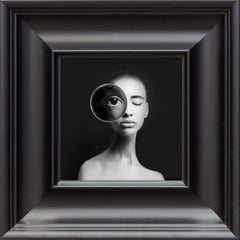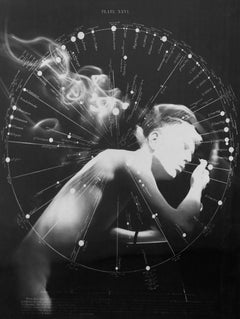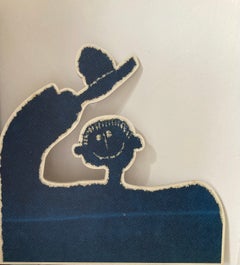Items Similar to Russian Samizdat Art Pioneers Conceptual Photo Photograph Gerlovin & Gerlovina
Want more images or videos?
Request additional images or videos from the seller
1 of 9
Rimma Gerlovina & Valeriy GerlovinRussian Samizdat Art Pioneers Conceptual Photo Photograph Gerlovin & Gerlovina1992
1992
$1,200
£910.53
€1,041.11
CA$1,676.07
A$1,863.57
CHF 973.05
MX$22,684.15
NOK 12,415.72
SEK 11,632.93
DKK 7,770.01
Shipping
Retrieving quote...The 1stDibs Promise:
Authenticity Guarantee,
Money-Back Guarantee,
24-Hour Cancellation
About the Item
Greetings, 1992
Photograph 10.25 h × 7.5 w in (26 × 19 cm), Frame 11 x 8 inches
Photo mounted to foamcore and framed behind acrylic
Hand signed and dated 'Rimma and Valeriy 1992';
Rimma Gerlovina and Valeriy Gerlovin were founding members of the underground conceptual movement Samizdat in the Soviet Union, described in their book Russian Samizdat Art. Based on a play of paradoxes, their work is rich with philosophic and mythological implications, reflected in their writing as well. Their book Concepts was published in Russia in 2012. The work by Rimma Gerlovina and Valeriy Gerlovin is emphatically contemporary. The artist couple were part of the Moscow Conceptualists, their performance Costumes, from 1977, deepened their ongoing work with linguistic semiotic systems and their own bodies. Considering the context in which Gerlovina and Gerlovin made their work—that of political restrictions on public life, of unfreedom, and censorship—their collaborative togetherness must also be read as a space of possibility for political community and resistance. Rimma Gerlovina’s hair is featured prominently in the art of the Gerlovins as a constructing element of the body. Used for the linear drawings her braids transmit transpersonal waves reminiscent of an aura of live filaments. Long loose hairs function as threads of life; streaming in abundance, they allude to Aphrodisiac vitality and Samsonian strength. On the other hand, they are the haircloth worn during mourning and penitence. In New York they continued to make sculptural objects, and their photographic projects grew into an extended series called Photoglyphs. In their photographs, they use their own faces to explore the nature of thought and what lies beyond it. Since coming to the United States in 1980, they had many exhibitions in galleries and museums including the Art Institute of Chicago. The New Orleans Museum of Art launched a retrospective of their photography, which traveled to fifteen cities. Group exhibitions include the Venice Biennale, the Guggenheim Museum, New York, Smithsonian National Museum of American Art, Washington D.C., Bonn Kunsthalle, Germany, Tokyo Metropolitan Museum of Photography, State Tretyakov Gallery, Moscow, and others.
Samizdat or “self-published” began in the Soviet Union, and Samizdat art consists mainly of books and magazines published and distributed by the artists who made them. Samizdat art has sources in the innovative books and magazines turned out by the early 20th century Russian avant-garde—artists and writers like Olga Rozanova, Vladimir Mayakovsky, El Lissitzky, and Alexander Rodchenko.
Artists as varied as Alexander Archipenko, Leon Bakst, Marc Chagall, Naum Gabo, Alexandra Exter have all been associated with the movement. Later Samizdat examples include the poster portraits of Lenin and Stalin, both 1982, by the now New York–based Vagrich Bakhchanyan, a leading Samizdat personality whose career spans the development of the medium. Victor Tupitsyn, collages, Lev Nussberg Correspondence of K.S. Malevich (1878–1935) to L.V. Nussberg (1937–1998), 1981, texts and drawings made to appear as if by Malevich—the ultimate homage from the Russian avant-garde of the late 20th century to that of the early. Komar and Melamid, Valentin Goroshko and Elisabeth Clark, Alexander Kosolapov, Lev Rubinshtein, and Anatoly Ur.
Books featuring their works: Art on the Edge and Over by Linda Weintraub; Reflections in a Glass Eye (ICP and Bulfinch Press); Face, The New Photographic Portrait (Thames & Hudson); Moscow Conceptualism in Context (Prestel); Serpenti in Art (Bulgari); also art history college books, such as Understanding Art and Foundations of Art and Design by Lois Fichner-Rathus (Cengage), and others.
Their works have appeared on the covers of The New York Times Magazine; Zoom; The Sciences; The Buddhist Review Tricycle. In the Millennium Issue on art, The New York Times Magazine gave them a spread. (Excerpt from publications)
Museum collections include The Art Institute of Chicago; The Guggenheim Museum, NYC; The Getty Research Institute, Los Angeles; International Center of Photography, NYC; Centre Pompidou, Paris (cubes) (Mirror Game) ; Tate Modern, London; The Museum of Fine Arts, Houston; Cincinnati Art Museum; Denver Art Museum; Nasher Museum at Duke University, NC; the Polaroid Photograph collection, Yale University Art Gallery, New Haven, CT; The Scottsdale Museum of Contemporary Art, AZ; Ackland Museum of Art, NC; Zimmerli Art Museum at Rutgers University, NJ; Museo d'Arte Moderna di Trento e Rovereto, Italy; National Gallery of Australia, Canberra; The State Tretyakov Gallery, Moscow; Museum Moderner Kunst Ludwig, Vienna, and others. Their work has also been sold by leading auction houses, including Sotheby’s, Christie’s, and Phillip’s.
- Creator:Rimma Gerlovina & Valeriy Gerlovin (Russian, American)
- Creation Year:1992
- Dimensions:Height: 11 in (27.94 cm)Width: 8 in (20.32 cm)
- Medium:
- Period:
- Condition:
- Gallery Location:Surfside, FL
- Reference Number:1stDibs: LU38211456392
About the Seller
4.9
Platinum Seller
Premium sellers with a 4.7+ rating and 24-hour response times
Established in 1995
1stDibs seller since 2014
1,784 sales on 1stDibs
Typical response time: <1 hour
- ShippingRetrieving quote...Shipping from: Surfside, FL
- Return Policy
Authenticity Guarantee
In the unlikely event there’s an issue with an item’s authenticity, contact us within 1 year for a full refund. DetailsMoney-Back Guarantee
If your item is not as described, is damaged in transit, or does not arrive, contact us within 7 days for a full refund. Details24-Hour Cancellation
You have a 24-hour grace period in which to reconsider your purchase, with no questions asked.Vetted Professional Sellers
Our world-class sellers must adhere to strict standards for service and quality, maintaining the integrity of our listings.Price-Match Guarantee
If you find that a seller listed the same item for a lower price elsewhere, we’ll match it.Trusted Global Delivery
Our best-in-class carrier network provides specialized shipping options worldwide, including custom delivery.More From This Seller
View AllRussian Samizdat Art Conceptual Photo Sculpture Assemblage Gerlovin & Gerlovina
Located in Surfside, FL
Rimma Gerlovina and Valeriy Gerlovin
Clock, 1987-94
Aluminum sculpture, mixed media and c-print photograph construction, c-print, felt tip marker
13 h × 13 w × 4 d in (30 × 30 × 6 cm)
Rimma Gerlovina and Valeriy Gerlovin were founding members of the underground conceptual movement Samizdat in the Soviet Union, described in their book Russian Samizdat Art. Based on a play of paradoxes, their work is rich with philosophic and mythological implications, reflected in their writing as well. Their book Concepts was published in Russia in 2012. The work by Rimma Gerlovina and Valeriy Gerlovin is emphatically contemporary. The artist couple were part of the Moscow Conceptualists, their performance Costumes, from 1977, deepened their ongoing work with linguistic semiotic systems and their own bodies. Considering the context in which Gerlovina and Gerlovin made their work—that of political restrictions on public life, of unfreedom, and censorship—their collaborative togetherness must also be read as a space of possibility for political community and resistance. Rimma Gerlovina’s hair is featured prominently in the art of the Gerlovins as a constructing element of the body. Used for the linear drawings her braids transmit transpersonal waves reminiscent of an aura of live filaments. Long loose hairs function as threads of life; streaming in abundance, they allude to Aphrodisiac vitality and Samsonian strength. On the other hand, they are the haircloth worn during mourning and penitence. In New York they continued to make sculptural objects, and their photographic projects grew into an extended series called Photoglyphs. In their photographs, they use their own faces to explore the nature of thought and what lies beyond it. Since coming to the United States in 1980, they had many exhibitions in galleries and museums including the Art Institute of Chicago. The New Orleans Museum of Art launched a retrospective of their photography, which traveled to fifteen cities. Group exhibitions include the Venice Biennale, the Guggenheim Museum, New York, Smithsonian National Museum of American Art, Washington D.C., Bonn Kunsthalle, Germany, Tokyo Metropolitan Museum of Photography, State Tretyakov Gallery, Moscow, and others.
Samizdat or “self-published” began in the Soviet Union, and Samizdat art consists mainly of books and magazines published and distributed by the artists who made them. Samizdat art has sources in the innovative books and magazines turned out by the early 20th century Russian avant-garde—artists and writers like Olga Rozanova, Vladimir Mayakovsky, El Lissitzky, and Alexander Rodchenko.
Artists as varied as Alexander Archipenko, Leon Bakst, Marc Chagall, Naum Gabo, Alexandra Exter...
Category
1980s Conceptual Figurative Photography
Materials
Metal
Rare Harry Bowers Vintage C Print Photograph From Ten Photographs Fashion Photo
By Harry Bowers
Located in Surfside, FL
HARRY BOWERS
T E N P H O T O G R A P H S
I DON'T LOOK FOR PHOTOGRAPHS I INVENT THEM
I recall my first meeting with Harry Bowers in California a few years ago. As he produced his large-scale prints, I was at first flabbergasted, not only by their size, but by their seamless perfection. Technique appeared to be everything but then technique as technique simply vanished. After the first moment, technique was no longer an issue, but rather a passageway to the imagery.
Suffice it to say about Harry Bowers' working style that he is an obsessive man. Trained as an engineer, he has turned that discipline to art. His lenses, equipment and darkroom, much of it exactingly manufactured by himself to answer certain needs, serve the desire of the artist to take photographic technique to its ultimate perfection in invisibility and transparency. I respect obsession in art, and particularly in photography, because obsession in photography passes beyond the easy, middle ground of image making to a more demanding, more difficult, yet more rewarding end. Bowers' obsession is to eliminate "photography as technique." No grain, no decisive moments, no journalism, or, seemingly, direct autobiographical endeavors appear in his work.
Bowers is an artist of synthesis who controls his environment if only in the studio exactly to his liking. The images he creates are formal structures, saucy stories on occasion, which may offer hints of a darker, more frightening sexuality, but what you see is the end product of an experiment in which nothing save the original insight perhaps is left to chance.
We seem fascinated with the idea of replication of reality in art. Popular painting frequently reproduces a scene "with the accuracy of a photograph," and photographs may "make you feel as though you were right there." The very invisibility of the photographic medium is important to Bowers, in that it allows him to maneuver his subject matter without concern for rendering it in an obvious art medium which would interfere with the nature of the materials he uses. The formal subtleties of Bowers' recent work are as delicious and ambiguous in their interrelationships as the best Cubist collages, yet while those collages always suggest their parts through edge and texture, these photographs present a structure through a surface purity.
Bowers' earlier works, for example, the Skirts I Have Known series, were formed of bits of clothing belonging to Bowers and his wife or found at local thrift shops. These works fused an elegance of pattern and texture, reminiscent of Miriam Shapiro...
Category
1980s Photography
Materials
Photographic Paper
Conceptual Contemporary Art Color Photograph, Social Commentary
By Carole Conde & Karl Beveridge
Located in Surfside, FL
Provenance: Deaccessioned from a New York University.
Condé + Beveridge
Carole Condé and Karl Beveridge
Condé born in Hamilton in 1940. Beveridge born in Ottawa in 1945. Both live ...
Category
Late 20th Century Conceptual Color Photography
Materials
C Print, Color
Abstract Portrait Chromogenic Color Print
By Sandra Haber
Located in Surfside, FL
American artist and photographer, Sandra Haber, born 1956
Exhibited at MoMA, 1984
Category
1980s Contemporary Abstract Photography
Materials
Photographic Paper, Color
Russian Samizdat Art Conceptual Compass Sculpture Assemblage Gerlovin, Gerlovina
Located in Surfside, FL
Rimma Gerlovina and Valeriy Gerlovin
Compass, 1988
Aluminum sculpture, mixed media and c-print photograph construction, c-print, felt tip marker
12.5 h × 12.5w × 4 d in (30 × 30 × 6 cm)
Rimma Gerlovina and Valeriy Gerlovin were founding members of the underground conceptual movement Samizdat in the Soviet Union, described in their book Russian Samizdat Art. Based on a play of paradoxes, their work is rich with philosophic and mythological implications, reflected in their writing as well. Their book Concepts was published in Russia in 2012. The work by Rimma Gerlovina and Valeriy Gerlovin is emphatically contemporary. The artist couple were part of the Moscow Conceptualists, their performance Costumes, from 1977, deepened their ongoing work with linguistic semiotic systems and their own bodies. Considering the context in which Gerlovina and Gerlovin made their work—that of political restrictions on public life, of unfreedom, and censorship—their collaborative togetherness must also be read as a space of possibility for political community and resistance. Rimma Gerlovina’s hair is featured prominently in the art of the Gerlovins as a constructing element of the body. Used for the linear drawings her braids transmit transpersonal waves reminiscent of an aura of live filaments. Long loose hairs function as threads of life; streaming in abundance, they allude to Aphrodisiac vitality and Samsonian strength. On the other hand, they are the haircloth worn during mourning and penitence. In New York they continued to make sculptural objects, and their photographic projects grew into an extended series called Photoglyphs. In their photographs, they use their own faces to explore the nature of thought and what lies beyond it. Since coming to the United States in 1980, they had many exhibitions in galleries and museums including the Art Institute of Chicago. The New Orleans Museum of Art launched a retrospective of their photography, which traveled to fifteen cities. Group exhibitions include the Venice Biennale, the Guggenheim Museum, New York, Smithsonian National Museum of American Art, Washington D.C., Bonn Kunsthalle, Germany, Tokyo Metropolitan Museum of Photography, State Tretyakov Gallery, Moscow, and others.
Samizdat or “self-published” began in the Soviet Union, and Samizdat art consists mainly of books and magazines published and distributed by the artists who made them. Samizdat art has sources in the innovative books and magazines turned out by the early 20th century Russian avant-garde—artists and writers like Olga Rozanova, Vladimir Mayakovsky, El Lissitzky, and Alexander Rodchenko.
Artists as varied as Alexander Archipenko, Leon Bakst, Marc Chagall, Naum Gabo, Alexandra Exter...
Category
1980s Conceptual Figurative Photography
Materials
Metal
Conceptual Contemporary Art Color Photograph, Social Commentary
By Carole Conde & Karl Beveridge
Located in Surfside, FL
Referencing immigrants and the disabled. Social commentary conceptual artwork.
Provenance: Deaccessioned from a New York University.
Condé + Beveridg...
Category
Late 20th Century Conceptual Color Photography
Materials
C Print, Color
You May Also Like
My Beloved Photography Print Limited edition
By Sandra Salamonová
Located in Slovak Republic, SK
Inspired by F.X. Messerschmidt, hope to give some ideas for thoughts, print, limited of 15.
Category
21st Century and Contemporary Modern Portrait Prints
Materials
Black and White, Digital
$297 Sale Price
79% Off
Free Shipping
Temporal Space 2050-37
Located in New York City, NY
16 x 16 inches
40 x 40 cm
Edition of 15
Archival Pigment Print on a Baryta Paper
Mounted and Framed
32 x 32 inches
80 x 80 cm
Edition of 7
Archival Pigment Print on a Baryta Paper
...
Category
2010s Contemporary Portrait Photography
Materials
Archival Pigment
Price Upon Request
Untitled (XXVI)
By Robert Flynt
Located in New York, NY
Chromogenic LightJet print (Edition of 5)
Signed and numbered, verso
20 x 16 inches, sheet
This artwork is offered by ClampArt, located in New York City.
Robert Flynt...
Category
2010s Contemporary Figurative Photography
Materials
Black and White
Price Upon Request
Good Morning / Photo / Collage / Signed
By Sandra Salamonová
Located in Slovak Republic, SK
This photography is a reminiscence to a PF card from 1968 done by my father. The replica in a bigger format was done on the occasion of his solo exhibition in June 2023 in Slovakia. Will be signed and a single copy of the photo for sale.
Category
21st Century and Contemporary Contemporary Figurative Photography
Materials
Color, Photographic Paper
How to Brutally Construct an Absurd Sense of Pride
By Alexis Fidetzis
Located in New York, NY
Alexis Fidetzis
How to Brutally Construct an Absurd Sense of Pride
digital print on paper
30 x 150 cm (7 pieces)
Category
21st Century and Contemporary Conceptual Figurative Prints
Materials
Archival Pigment
Price Upon Request
I asked her, what do you want for the birthday, and she said...
Located in Torino, TO
Leila Erdman Tbukashvili captures moments from a year of mindful travel: faces, bodies, and places become fragments of memory and emotion. Love, loss, belonging, told through intimat...
Category
2010s Portrait Photography
Materials
Photographic Paper
More Ways To Browse
Russian Art Books
Russian Avant Garde
20th C Russian Art
Metropolitan Museum Of Art Poster
Russian Collage
Duke University Vintage
Paris Review Posters
1980s Vintage Nyc Photos
Homage To Chagall
Chagall Signed Poster
Lenin Art
Leon Bakst
Marc Chagall Couple
New Orleans Poster
Thames Glass
Soviet Space Poster
Vintage Houston Poster
New Orleans Vintage Posters
